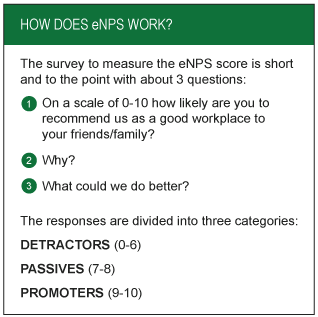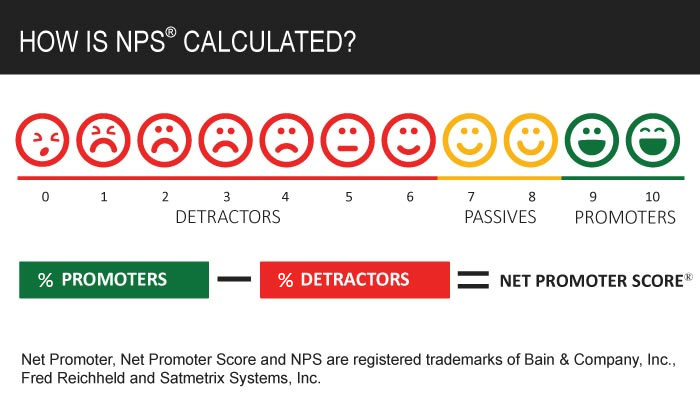The One Number No One is Talking About: eNPS
The One Number No One is Talking About: eNPS
Loyalty. Motivation. Passion. Growth
All attributes that you want your employees to possess if you want your organisation to grow and your customers to be happy. We love our customers because they bring us revenue. We work tirelessly to better their experience with our brand. But what about the employee who has to deal with this important customer day in and day out? How well are your employees truly engaged? What do you think will be their answer to the question, ‘Would you recommend us to your friends/family?’
A survey done by Bain & Company showed that employees with the longest tenure are the least engaged with their companies. Highly engaged senior employees may underestimate the discontent among frontline employees and engagement levels were found to be the lowest among sales and service employees, the ones who are closest to the ultimate customer. Now if this does not trouble you… But wait…what if we told you that measuring loyalty, what it takes to be a loyal employee and how you can ensure that the answer to “would you recommend us” question comes out a resounding yes?
 What is eNPS?
What is eNPS?
Employee Net Promoter Score is derived from Net Promoter Score®, a customer service tool to gauge customer loyalty. It measures the likelihood of an employee recommending your place of work or the products you sell to their friends and family. It helps you understand what your employees like or dislike about working for you.
Why is employee loyalty important?
Loyal employees work harder. They believe in what you are doing and are actively involved in going above and beyond what their duties require them to do. They are constantly brainstorming ideas that can help your organisation grow. And it is not a stretch to see them more engaged your employees are, the more productive they are, the more they care for their customers which ultimately leads to the ROI we so love. Apart from this, loyal employees stay with you longer. This means reducing employee turnover costs that can be both financial and emotional as it can affect the morale of the organisation.
eNPS is then calculated by subtracting the detractors from the promoters. The score can range from -100 to +100 and this gives the business a pulse of the employee satisfaction levels. The idea of eNPS is, of course, to have more promoters, fewer detractors and convert the passives to promoters.

A negative score means more detractors. This will require you to take a deep dive into the qualitative answers to figure out what’s going wrong and then work aggressively to improve. A positive score means more promoters. Here a deep dive into the “why” can help you understand what you’re doing right and how you can enhance it further.
Loyal employees work harder. They believe in what you are doing and are actively involved in going above and beyond what their duties require them to do.
While the score is important for an objective understanding of employee loyalty, the next two questions provide the qualitative answers that can prove insightful and form a basis for improvement. It is also vital to break down the “would you recommend” question into two parts – workplace and product – so you can understand the score further. For example, you may have a wonderful workplace but a terrible product. You could also have a superb product but a terrible work environment. The answer to the “why” then becomes doubly important.
Since the survey is short, it can be done as frequently as required by organisations. Some do it once a month, once in three months or twice a year.
Driving customer centricity with eNPS
For an organisation to be customer-centric there is a direct correlation between customer experience and employee experience. In a customer-centric organisation, the employees are empowered to delight the customers. They are given the confidence to make decisions as per the situation, without the sanctioning required of multiple management levels. There is a top-down cultural approach to always have the customer experience at the forefront of every decision. And this ultimately acts as a catalyst to positive business growth.

